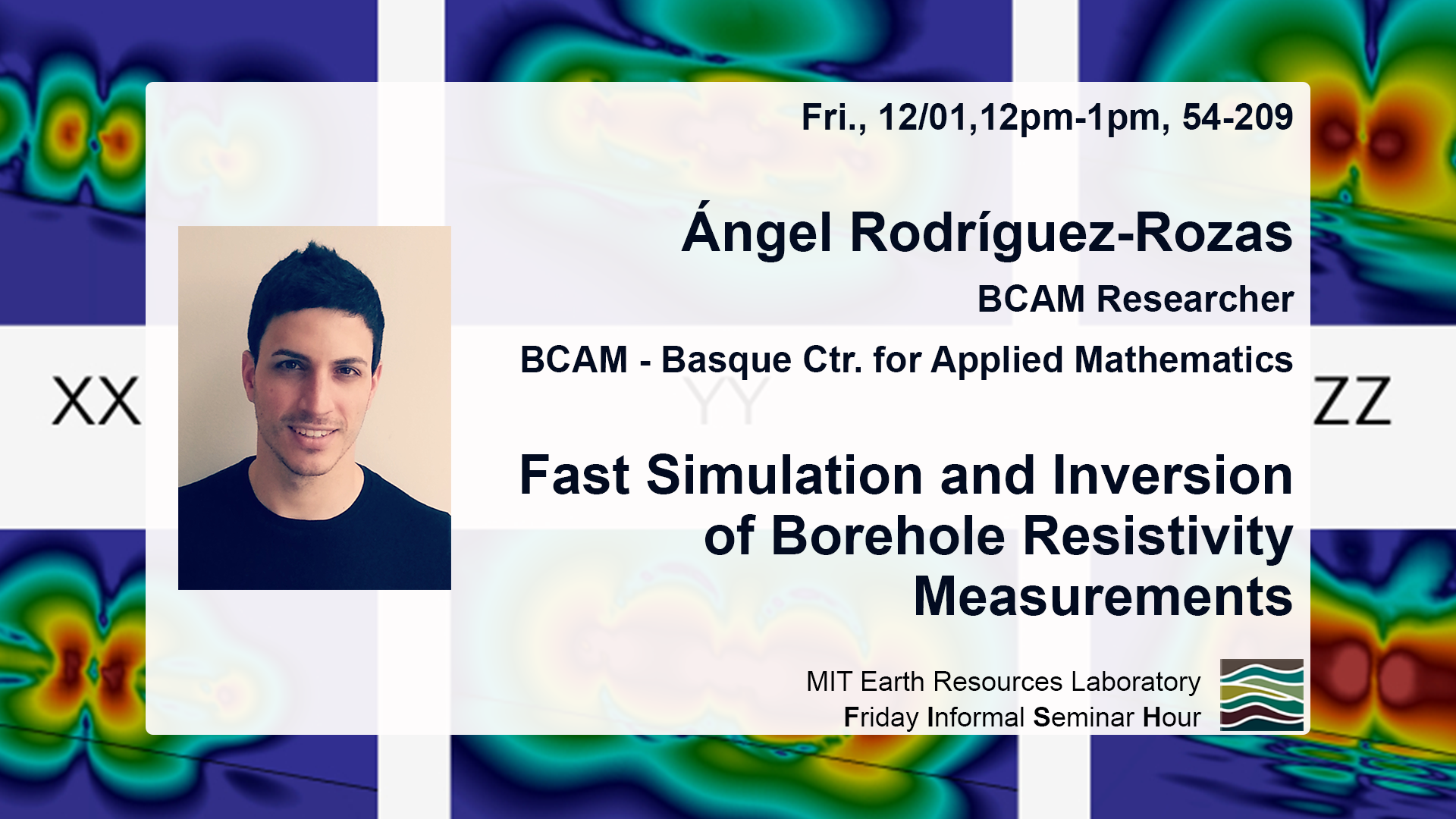Speaker:

Dr. Ángel Rodríguez Rozas, Researcher at BCAM - Basque Center for Applied Mathematics, presents "Fast Simulation and Inversion of Borehole Resistivity Measurements."
"Accurate inversion methods are needed to provide a precise quantitative estimation of the subsurface's resistivity distribution, enabling the identification and assessment of hydrocarbon-bearing formations. In this seminar, I will focus on the fast simulation and inversion of logging-while-drilling (LWD) and extra-deep azimuthal resistivity measurements for geosteering.
In well geosteering, interpretation of resistivity measurements has to be performed in real-time, and the use of general 3D inversion methods becomes prohibitively expensive. In order to reduce the computational cost, it is possible to decrease the problem dimensionality by means of a Fourier or a Hankel series expansion along one or two spatial dimensions, leading to the so-called 2.5D and 1.5D formulations, respectively.
1.5D simulations can be rapidly accomplished either semi-analytically or numerically; however, the use of 1D transversely isotropic (TI) models is insufficient to grant accurate simulations when dealing with geological faults and/or other high-dimensional spatial features that may appear in complex rock formations. For 2D TI models, efficient 2.5D simulations for real-time well geosteering inversion require spatial discretizations (grids) that are often challenging to design.
In the first part of this seminar, I will focus on some of the latest developments in our 1.5D+2.5D inversion library, namely: (a) an algorithm for the fast simulation of 2.5D Finite Element simulations of borehole resistivity measurements using distributed memory parallel machines, and (b) the use of a rescaling strategy for modeling different logging instruments.
In the second part of this seminar, I will present the capabilities of our library to simultaneously invert measurements acquired at different wells and/or with different commercial LWD and deep azimuthal co-axial and tri-axial logging instruments. The inversion is made for the positions of the bed boundaries in addition to the horizontal and vertical layer resistivities.
Numerical experiments performed over synthetic examples and a field example will illustrate the need for combining 1.5D and 2.5D measurements in order to properly invert borehole resistivity measurements acquired in 3D formations."
Prior knowledge:
- Essential: numerical methods for solving PDEs, Inverse Problems, Geophysics.
- Recommended: Finite Element Method, Maxwell's equations, Formation Evaluation, Borehole Geophysics, Resistivity Measurements, Well Logging.